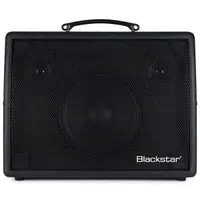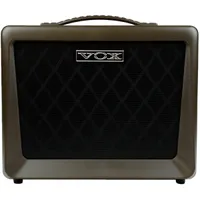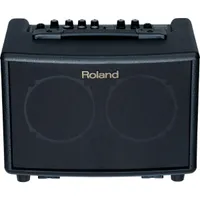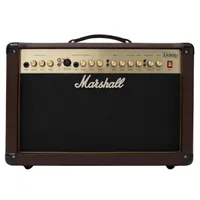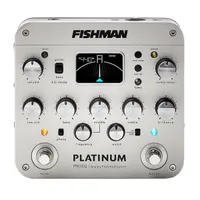Best acoustic guitar amp 2025: Amplify your acoustic with a top-rated amp
Whether you’re practicing, busking, or performing, amplify the finest qualities of your guitar with our selection of acoustic amps
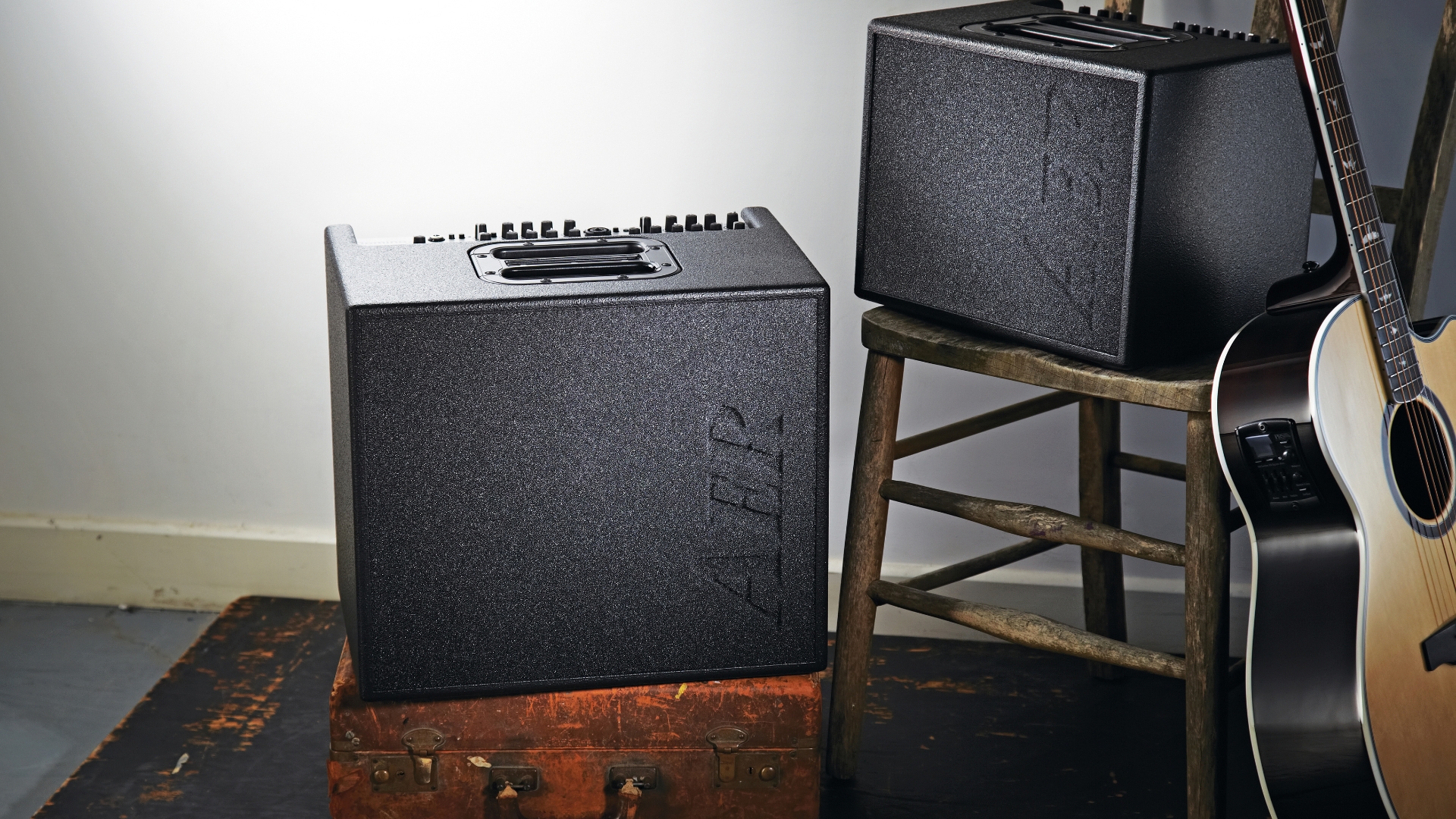
There are quite a few instances where you might need to rely on the additional power of one of the best acoustic guitar amps. It could be you just want to amplify your tone at home, take your acoustic busking, or play gigs and not have to rely on an underpowered PA system. Whichever it is, this guide will get you pointed in the right direction.
Here at MusicRadar, our team of expert writers have been playing acoustic guitars for many years now and tested our fair share of acoustic guitar amps in that time too. Whether it's busking on our local streets or playing shows armed with an acoustic guitar and a looper, we know what's required from a guitar amp for acoustic guitar.
If you're looking for the very best of the best, we'd go for the AER Compact 60 MkIV. Its transparent tone lets your acoustic guitar shine, and the superb build quality makes it great for gigging. If that seems a little too pricey for you, go check out the Fender Acoustasonic 15, which delivers excellent acoustic guitar tones below the $200 mark.
If you're buying for the first time then be sure to check out our how to choose section, which breaks down everything you'll need to know before you buy a new amp. If you need more info, we've also curated a useful FAQs section with loads of common questions answered by the expert guitarists here at MusicRadar.
Our top picks
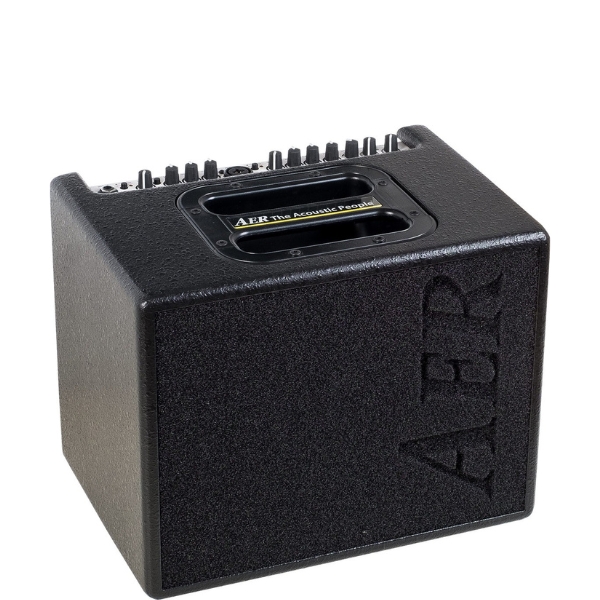
The Compact 60 has long been a favourite of professional players for its exceptional performance, delivering a crystal-clear transparency that doesn’t step on your acoustic’s tone.
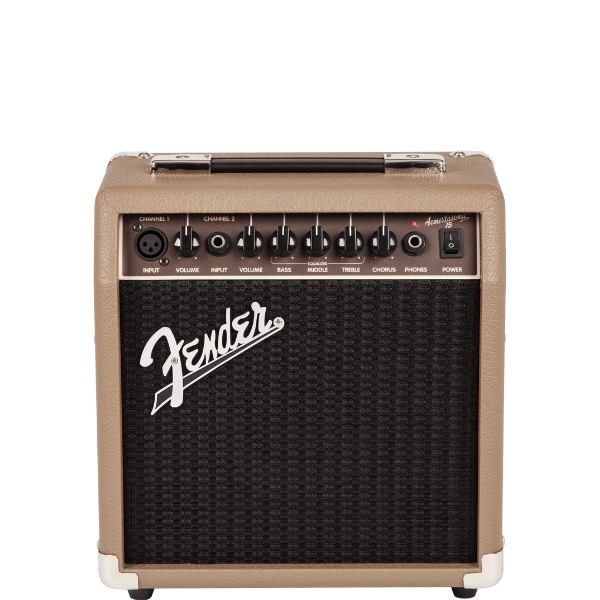
The Acoustasonic 15 is Fender’s entry-level acoustic combo and it shares much of the cool, understated style of its more sophisticated siblings. It is a simple 15-watt combo and deceptively loud.
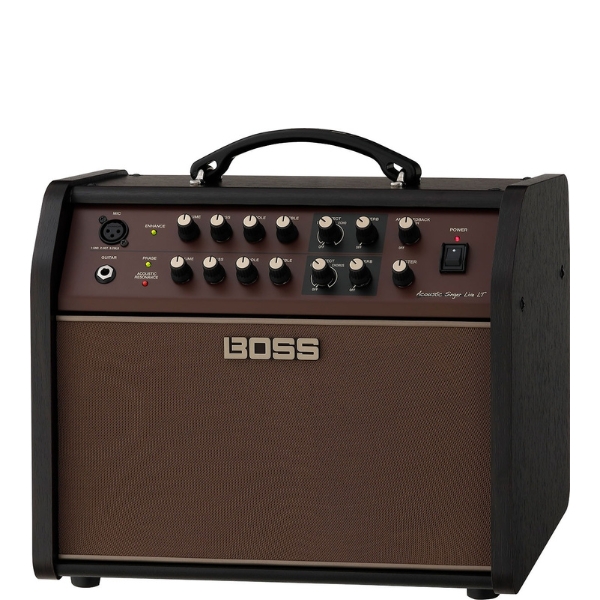
The Acoustic Singer offers an all-in-one amp solution for singer-songwriters, and its excellent design, tone and value for money make it a hugely attractive choice for any acoustic electric player.
Best overall
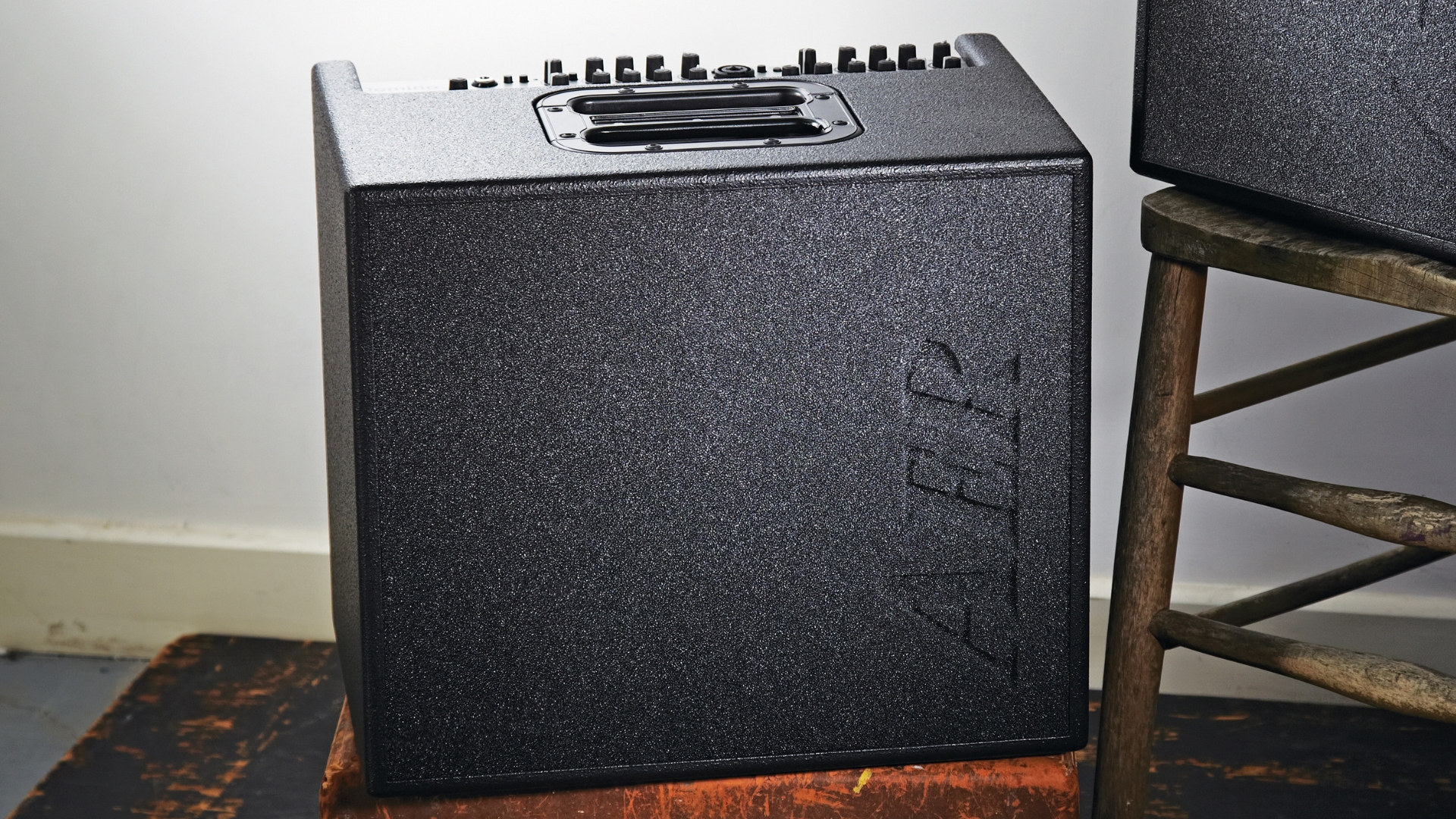
1. AER Compact 60 MkIV
Our expert review:
Specifications
Reasons to buy
Reasons to avoid
The Compact 60 has long been a favourite of professional players for its exceptional performance, delivering a crystal-clear transparency that doesn’t step on your acoustic’s tone.
Acoustic phenom Tommy Emmanuel is a fan. His signature model is based on the Compact 60, the only change in that the onboard delay is replaced with the reverb/chorus blend from setting 99 of a vintage Alesis MIDIVerb, and it costs about 30 bucks more than this MkIV. We could be tempted, but there’s plenty to be getting on with here.
The Compact 60 is super-practical. Its birch-ply cabinet is boxy but compact and light enough to take on public transport, and it is ideal for stage or the studio. Secondly, there are heaps of player-friendly features here and they’re all simple to use. There are four presets for the effects.
The MkIV is much the same as the much-loved MkIII. There is the Colour switch that can cut the low-mids and boost the highs to help accentuate fingerstyle playing, and this you can fine-tune via the EQ. And transparency is still the name of the game (set at noon, the Compact 60 is totally neutral). But the MkIV comes equipped with an auxiliary input with level control, a pre/post-FX switch to let you place your direct signal before or after the onboard effects, and 9V phantom power on channel 1 to supply instrument preamps without a battery.
Best budget
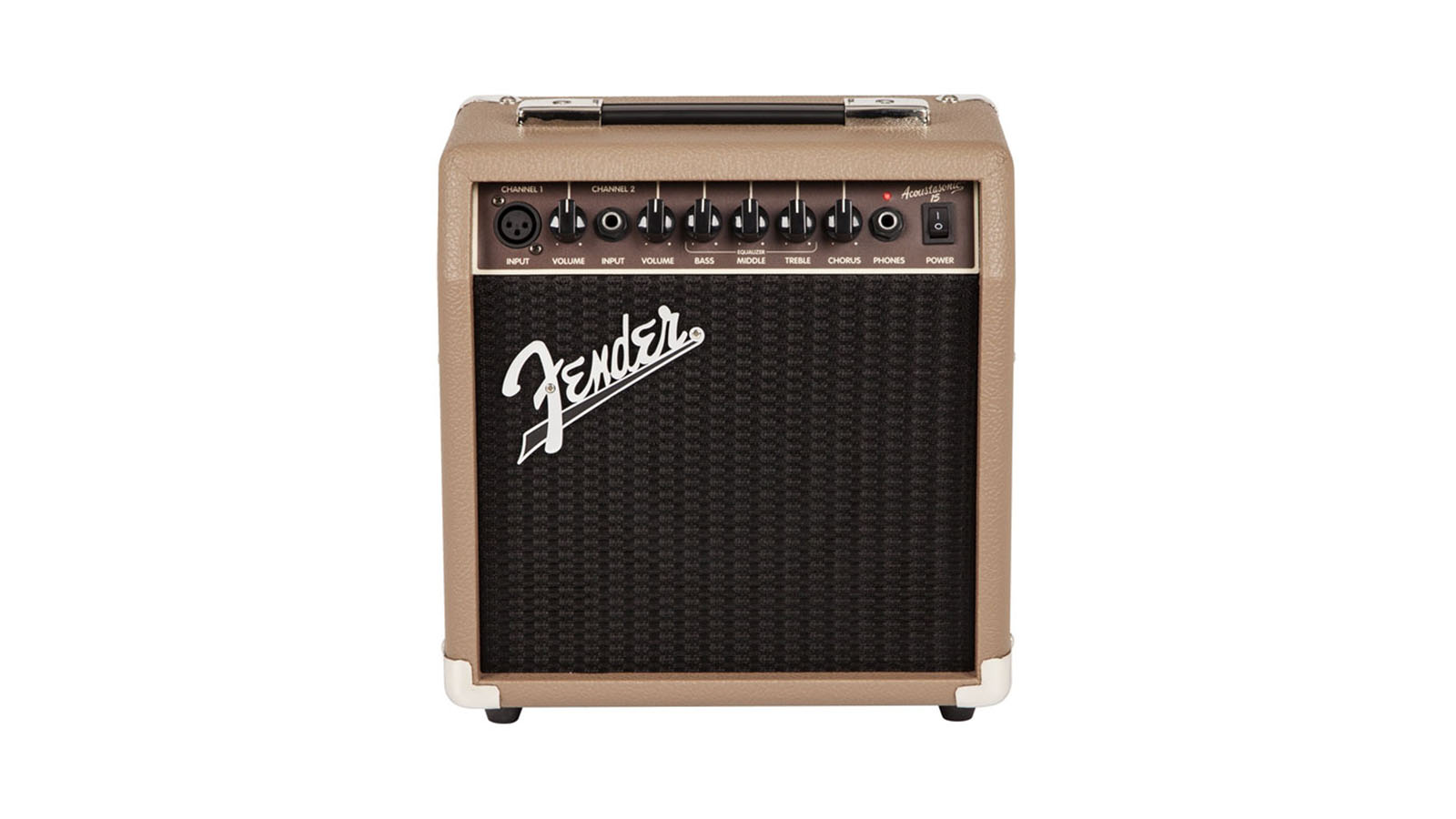
2. Fender Acoustasonic 15
Our expert review:
Specifications
Reasons to buy
Reasons to avoid
The Acoustasonic 15 is Fender’s entry-level acoustic combo and it shares much of the cool, understated style of its more sophisticated siblings. It is a simple 15-watt combo with a little 6” whizzer cone speaker that does an admirable job in projecting the full frequency dynamic of your instrument.
Those 15-watts are deceptively loud. If you needed a little no-fuss combo for playing in a room, a small party or pokey little coffee shop, this would get you through it. Of course, it’s ideal for practice situations when you have to be heard above other instruments – horns, strings, and so forth.
The control panel holds little mystery. There is a 3-band EQ, onboard chorus for adding a little width and depth to your tone, and an XLR input so you can hook up a vocal mic, too. The instrument and mic channels each have their own volume control so it’s easy dialling in the mix that you want.
Best for guitar and vocals

3. Boss Acoustic Singer Live LT
Our expert review:
Specifications
Reasons to buy
Reasons to avoid
The Acoustic Singer series from Boss takes the bi-amp format to offer an all-in-one amp solution for singer-songwriters, and its excellent design, tone and value for money make it a hugely attractive choice for any electro-acoustic player.
When it was first launched in 2017, we believed that the Acoustic Singer Pro raised the bar when it comes to the best acoustic guitar amps. The latest addition to the series, the Acoustic Singer Live LT, was unveiled at NAMM 2020 and offers a stripped-down version of the Pro and Live formats. It has a smaller footprint, is more affordable, and while it does not have the onboard looper, vocal harmoniser or dual DI, it nonetheless has a suite of features that make it ideal for live performance.
There is a vocal enhance feature – a simple button adds some oomph to your voice – and delay, echo and reverb. You can make quick changes to your acoustic tone too via a trio of acoustic responses, each at the touch of a button also. The guitar channel has anti-feedback control, and delay, chorus and reverb, while both have their own 3-band EQs. You have also got a line out and USB connectivity for recording and an aux-in with a handy level control for adding external audio to the mix.
Best for home
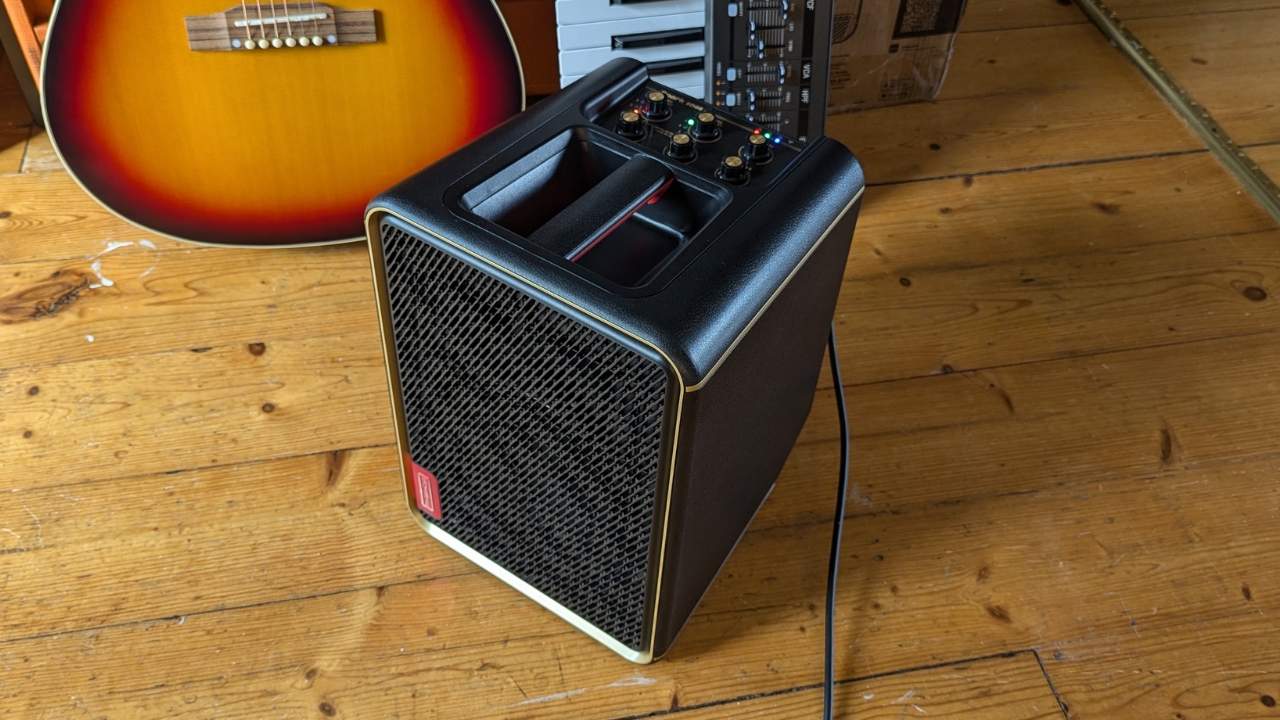
Specifications
Reasons to buy
Reasons to avoid
The Positive Grid Spark Edge is designed to allow you to take your music anywhere, but in my testing I found it best suited to home use. You can plug multiple instruments into it including a vocal mic which makes it a great all-rounder, but it's reliance on a smart phone app means it might put those off who want to use it live or when busking.
The sounds in the Spark Edge are absolutely fantastic whether you're plugging in an acoustic guitar or a vocal mic, or both at the same time. With four channels you can do quite a lot with this amp, and the full-range, flat-response speaker means it will handle acoustic guitar tones just as well as it does electric guitar ones.
It's really light weight and the handle on the top makes it easy to carry around if you decide to. The overall build quality is really nice, but it does feel a little plasticky compared to some of the others on this list. The hard plastic grille on the front does give you confidence that it can be used out and about however.
You will need to rely on the companion app to get the best out of this amp, which I can see putting off busking musicians who want things as simple as possible. You can use it without the app, but if you need to make changes to certain settings these are only accessible via your phone.
With a looper and a massive array of modelled guitar amps and effects to choose from, including ones that are vocal specific, when paired with a smart phone the Spark Edge makes for a formidable acoustic guitar amp that's perfect for using at home.

"With an acoustic guitar and dynamic microphone plugged in, it’s really easy to dial in a nicely balanced mix with just the knobs on top of the amp. It feels like there’s plenty of room for each instrument despite the Edge just having a single speaker, and it really allows each instrument to shine. Separate preset knobs for each channel make dialing in a nice mix a breeze, as well as giving you options for some more esoteric vocal tones."
Read more: Positive Grid Spark Edge review
Best for busking
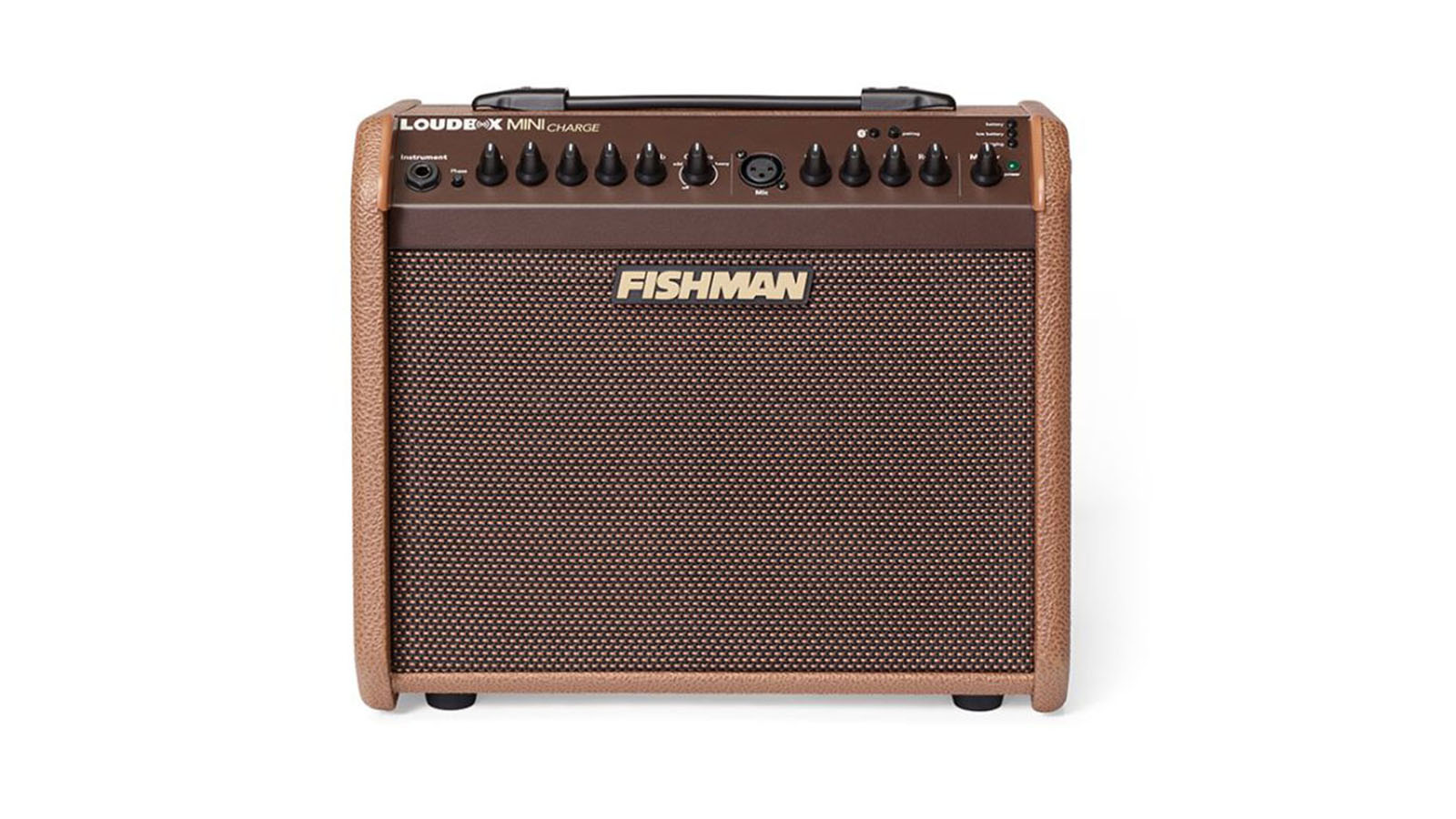
5. Fishman Loudbox Mini Charge
Our expert review:
Specifications
Reasons to buy
Reasons to avoid
Fishman has kept it simple with the Loudbox Mini Charge. There is not a cornucopia of inputs and outputs, just a single mix DI out, inputs for your guitar and mic, and an auxiliary input for playing MP3s/backing tracks. And with Bluetooth you might not even need the latter.
The idea is that the Loudbox Mini Charge offers a super-portable, easy-to-use amp for buskers who are serious about their tone. Simply charge it at the wall and it should last you for 12 hours at average volumes or 4 at maximum volume. That would be quite the set if you were to play for longer.
But you might want to; this is an excellent-sounding amp. On the guitar channel, there is onboard chorus and reverb, and a 3-band EQ for making those essential tweaks when you get to wherever you want to play. It’s loud enough for a busy street, and small enough to take on public transport.
Best for gigs
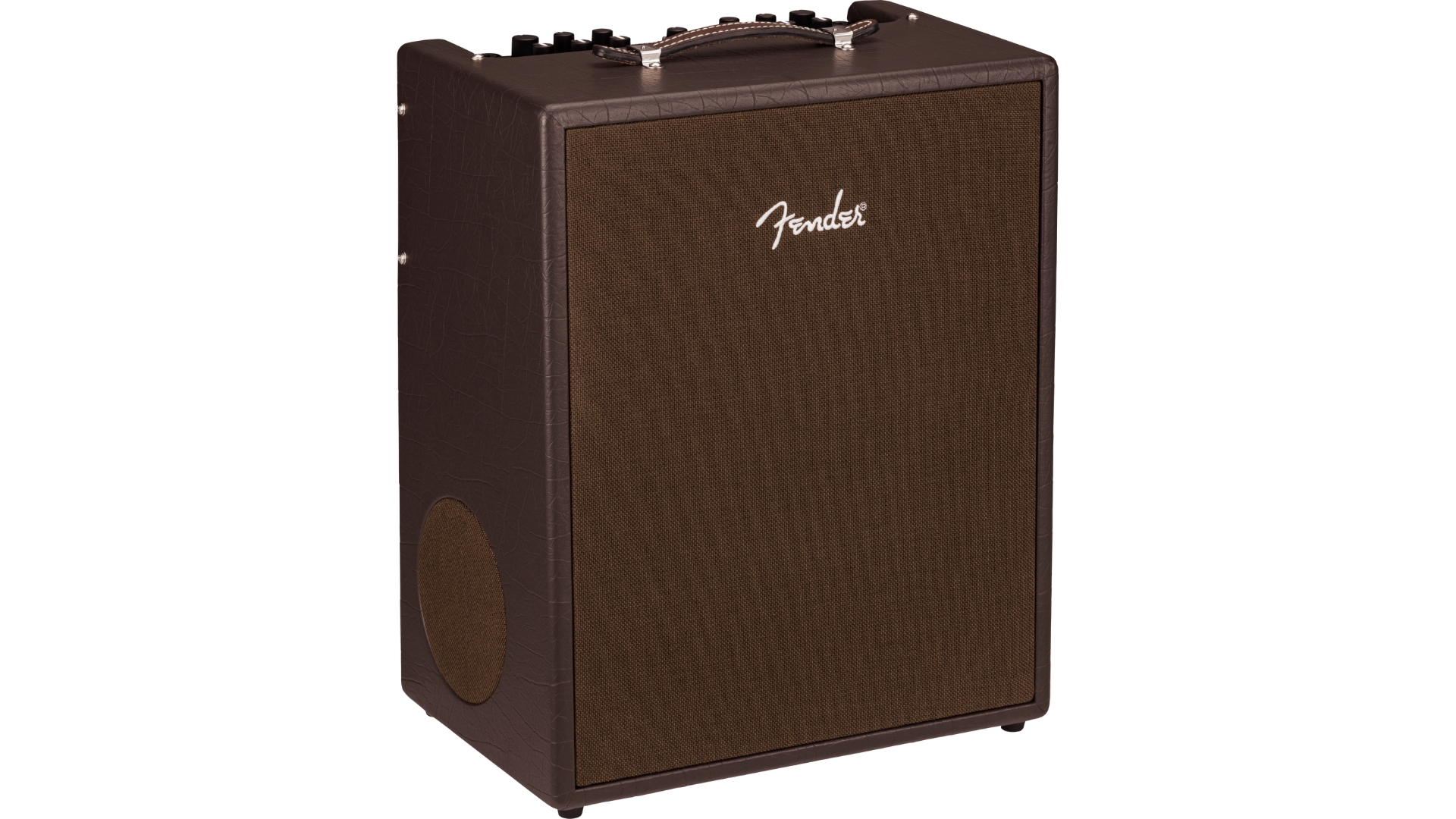
6. Fender Acoustic SFX II
Our expert review:
Specifications
Reasons to buy
Reasons to avoid
Fender’s flagship acoustic amplifier has entered its second iteration. Moving away from the retro-minimalist maple-ply design of the first series, Fender has embraced a coffee shop-core aesthetic with a new brown textured vinyl. The SFX II looks great next to a bookshelf, in a coffee shop, a club, or wherever you intend to play it.
The SFX II isn’t just about looks; it’s packed with features. It includes an inbuilt looper capable of up to 90 seconds of playback, which can be controlled by an optional footswitch. For those who like to play along with backing tracks, the SFX II now offers Bluetooth connectivity. This means that for coffee shop gigs, it can double as a speaker for background music before and after your sets.
Still present in the SFX II, and what sets it apart from other grab-and-go two-channel acoustic amplifiers, is the Stereo Field Expansion tech that gives it its name. The SFX has two identical channels with combo inputs that can be used with a 1/4” instrument jack or an XLR microphone input.
Here’s where it gets interesting. The SFX knob on the control panel works in conjunction with the side-radiating speaker to dial in how much stereo spread you want from the amp. You can leave the SFX off and have your tone poking right at your audience, or dial in a bit or spread it wider with the SFX for a more ambient in-the-room sound. Using the SFX with the Vibratone brings forth some lush wobble and rotary speaker swirl.
Spec comparison
Struggling to decide between our top picks? Here are some key specs for each acoustic amp that should help you narrow down your choices.
Model | Output | Channels | Speaker | Weight | Dimensions | Battery? |
|---|---|---|---|---|---|---|
AER Compact 60 MkIV | 60W | 2 | 1x 8” | 7.1kg/15.6lbs | 10.20 x 12.80 x 9.25” | No |
Fender Acoustasonic 15 | 15W | 2 | 1x 6” | 4.76kg/10.5lbs | 11.5 x 11.19 x 7.13” | No |
Boss Acoustic Singer Live LT | 60W | 2 | 1x 6.5”/1x 1” | 10.2kg/22.5lbs | 13.2 x 14.4 x 10.69” | No |
Positive Grid Spark Edge | 65W | 4 | 1x 6.5”/1x 1” | 6.2kg/13.66bs | 13.11 x 9.52 x 9.44” | Yes |
Fishman Loudbox Mini Charge | 60W | 2 | 1x 6.5”/1x 1” | 9.6kg/21.2lbs | 12 x 13.7 x 9.7” | Yes |
Fender Acoustic SFX II | 200W | 2 | 1x8"/1x6.5" | 9.98kg/22lbs | 14 x 19.3 x 22.8” | No |
Also consider
In my opinion the above acoustic amps are the ones you should be spending your money on. That said, there are a lot of different options out there so here are some more for you to look at.
Blackstar Sonnet 120
120W | 2-channels | 1x8" speaker | 6.5kg/14.3lbs
The Sonnet delivers a naturalistic sound but offers ample tone-shaping features. There is a shape control for switching between a flat EQ and one with the mids cut and bass/treble boosted. Between this shape control, the high pass filter and brilliance controls, the Sonnet gives you plenty of options for dialling in a tone that works with other instruments. And there is an efficient filter and global phase control for eliminating feedback.
★★★★½
Vox VX50AG
50W | 2-channel | 1/8" coaxial, 1x1" tweeter | 4.1kg/9lbs
The VX50AG is loud enough for small gigs and is pleasingly articulate – perhaps a little mercilessly so. It’ll punish sloppy playing but the other side of that ledger is that it really makes your tone pop. Fingerstyle guitarists will love its crisp response. Singer-songwriters will like the blend of both channels. Gigging players will love the red LEDs to warn you if it’s clipping. And heck, everyone will like the price.
★★★★☆
Read more: Vox VX50AG review
Roland AC-33
30W | 2-channel | 2x5" speakers | 4.7kg/10.36lbs
Like the Fishman Loudbox Mini Charge, you can take this amp anywhere, with the choice of AC power via an adaptor at the wall or 8 AA batteries. The batteries are housed in a removable carriage and can be recharged. It’s not quite as elegant a solution as charging the Loudbox at the wall but bear in mind that should you leave your charger at home you can get batteries anywhere at a pinch.
★★★★☆
Marshall AS50D
50W | 2-channels | 2x8" speakers | 16kg/35lbs
Marshall lets you decide which channel to apply the chorus and offers depth and speed controls. But of course if you want to hook up a delay or what have you, there is an effects loop on hand. The AS50D is one of the best acoustic guitar amps for those who like a few effects with their acoustic. While the reverb is global, the Reverb Balance Control lets you pan the reverb and/or the balance of the parallel effects loop to either channel.
★★★★☆
Fishman Platinum Pro EQ/DI Preamp
1-channel | 0.64kg/1.4lbs
At the heart of the pedal's superb sound quality is its built-in Class-A preamp, delivering high-fidelity sound and ample headroom. If you're not instantly satisfied with the tone, the 5-band tone control - with sweep-mid and a low-frequency filter - allows precise fine-tuning to suit your preferences. The Phase control and precision notch filter helps reduce feedback, just in case you’re gigging with a deep, resonant Dreadnought.
★★★★☆
How to choose
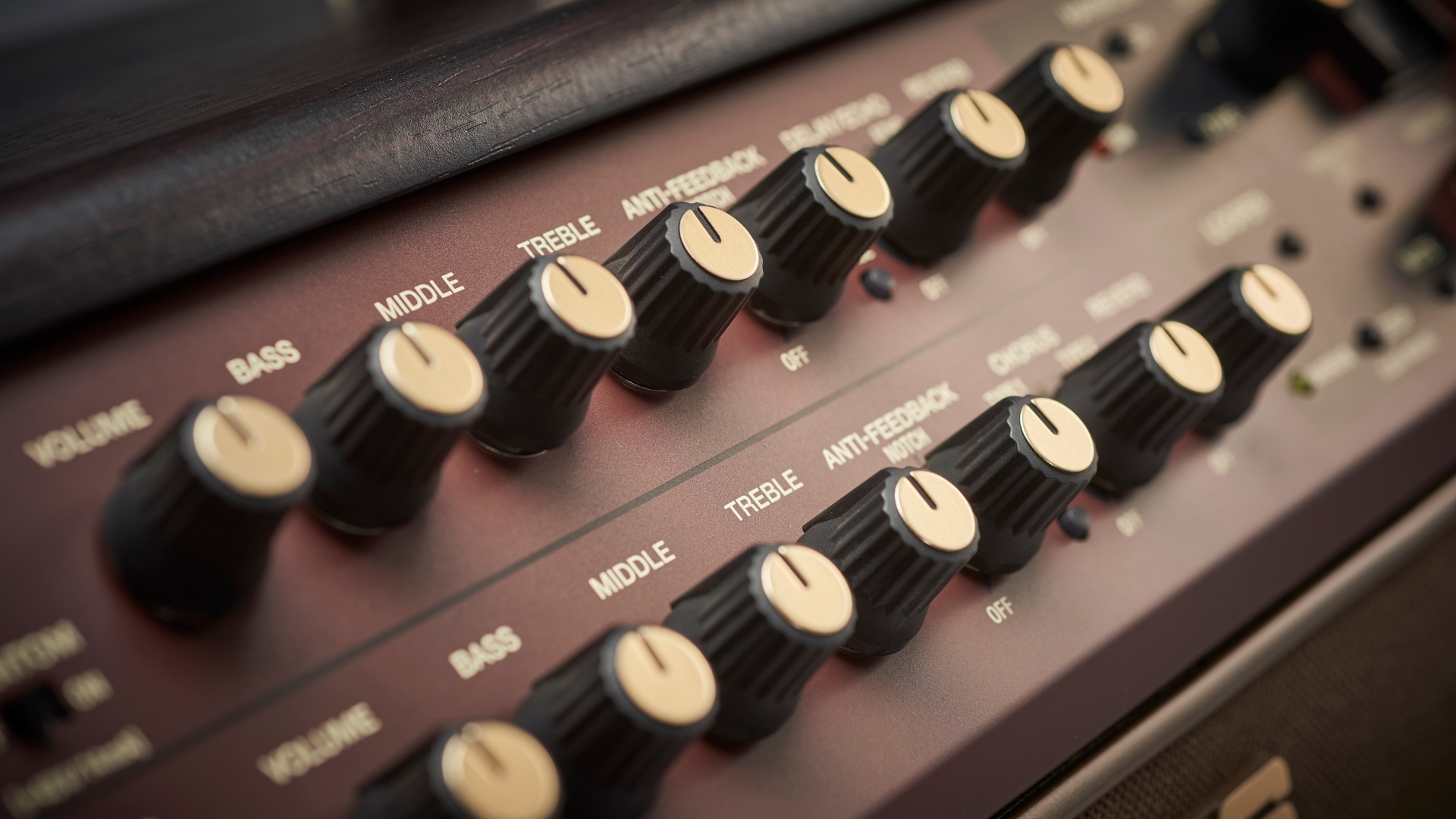
If you're buying an acoustic guitar amp for the first time, then this is the section for you. Here, we'll lay out all the options you need to be looking at when buying, so you can ensure you pick the perfect amp for you.
1. Where will you use the amp?
MusicRadar's got your back
This is the first and arguably most important question to answer. Different acoustic guitar amps offer different features depending on their particular use case, so thinking about where you're going to use your amp is a great first step.
If you're looking to just use your amp at home, then something like the Positive Grid Spark Edge would be a great choice. For those who are primarily into busking, the Fishman Loudbox Mini is a great battery powered option. For those who will mostly be gigging with their acoustic amps, you should definitely check out the Fender Acoustic SFX II.
2. Do you need portability?
Some of the acoustic guitar amps on this list are more portable than others. It's another important consideration that you should think about before you buy. If your amp is just staying at home then portability probably isn't as important, but you still might want something that's smaller depending on how much room you have.
Buskers will definitely want something that's easy to move around, as you'll likely have other gear to carry. You'll also want to consider something with a battery as using a power pack adds extra gear, and you won't always be guaranteed a power point depending on where your busking.
For those who are gigging, depending on your power needs and penchant for moving around gear, you might want to consider something portable, but these amps likely have less power than something larger.
3. Will you use vocal mics or other instruments?
A lot of acoustic guitar amps come with multiple inputs, so if you want to sing and play at the same time make sure you go for one with more than a single channel. It's also important to look for amps with an XLR connector for ease of use with a microphone. Some amps, like the Blackstar Sonnet 120, even come with phantom power for using a condenser microphone with them.
4. What's your budget?
Finally you'll need to look at your budget. Acoustic guitar amps can range anywhere between less than $100 to well over $1,000. The more beginner end of the spectrum is where you'll see lower cost options, usually best for practice or home use. Getting to the $500 can give you quite a lot for your money though, with enough power for busking and plenty of options for plugging in additional instruments. Those amps that sit on or above the $1,000 mark are where the sound quality gets a lot better.
FAQs
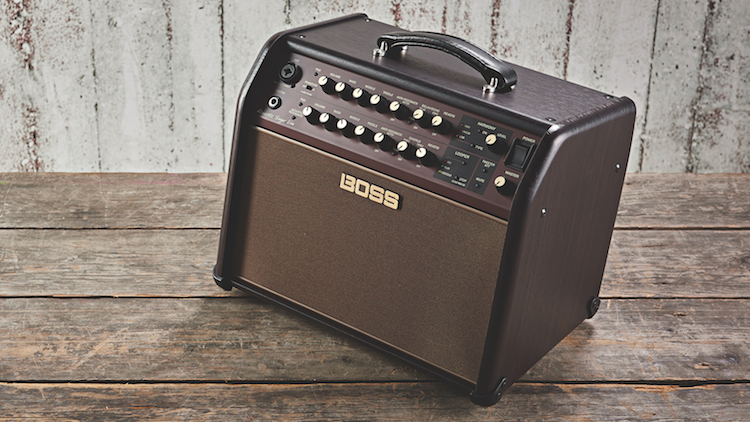
Are acoustic amps different to electric guitar amps?
If you are new to acoustic amplifiers, one of the first things to note is that their modus operandi is a little different to their electric guitar amp counterparts. The goal with the acoustic amplifier is to amplify your acoustic guitar tone faithfully, with no distortion, no feedback, and none of the artificial twackiness that you can get when electro-acoustics are amplified.
Broadly speaking, this transparent performance places the acoustic amplifier at the mercy of your guitar; it’s only going to sound as good as your guitar. Where a great electric guitar amp can make a piece of firewood sound useable, the acoustic amp has to work with what it’s got. That is the rule of the thumb, and the platonic ideal is to own a great-sounding acoustic, right?
But then there are a host of tone-shaping features to look out for that can save your tone on a day when, for example, you are playing with other musicians, and you need the EQ to brighten up your tone and help your fingerstyle pop through the mix. If you’ve got a smaller-bodied orchestra or parlour model then you could always dial in a little extra in the lower-mids to add depth to strummed chords.
Another fundamental difference between the electric guitar amp and the acoustic guitar amp is that the two-channel designs of the acoustic amp aren’t for having one clean channel and the other with a gain stage on it. More commonly it will because one will have a 1/4” instrument input jack and a XLR input for attaching a vocal mic or – if it has phantom power – a condenser mic for your acoustic guitar.
Do acoustic amps also offer effects?
Many acoustic amps will have onboard effects – typically reverb, which adds a little space to your tone and brightens up a dead room, but also delay and chorus. If you are a card-carrying member of the next-gen acoustic players who are shepherds of an ever-growing pedalboard, an effects loop might be essential.
Will an acoustic amp feed back?
Most good acoustic-electric preamps and acoustic guitar amplifiers offer some sort of prophylactic measure to stop feedback, such as a phase, notch filter and sweep. Feedback can be the bane of the acoustic player’s life, and it strikes when you least expect it. Sometimes it is the room that is the problem, but finding that troublesome frequency and taking it out will make your performances all the more enjoyable.
Amps such as the Marshall AS50D have a notch filter and a frequency sweep control to really give you control over it. Others will have phase switches, on/off buttons that cut some of the low-end frequencies that can cause mischief.
What are my power options?
There are other practical concerns that the acoustic guitarist needs to bear in mind. If you intend on busking, you’ll need a battery-powered amp. in this guide we have two choices for you, with the Fishman Loudbox Mini Charge an amp you charge at the wall and the Roland AC-33 taking a stack of AA batteries.
What outputs do I need?
The best acoustic guitar amp for you can also be a question of outputs. If you are looking for a recording amp, or if you want to send a signal via PA speakers, you’ll need a line out or XLR DI output. Many of these amps will offer a variety of solutions here, with ground lift to kill hum and some with the option of choosing channels for the outputs.
How we test
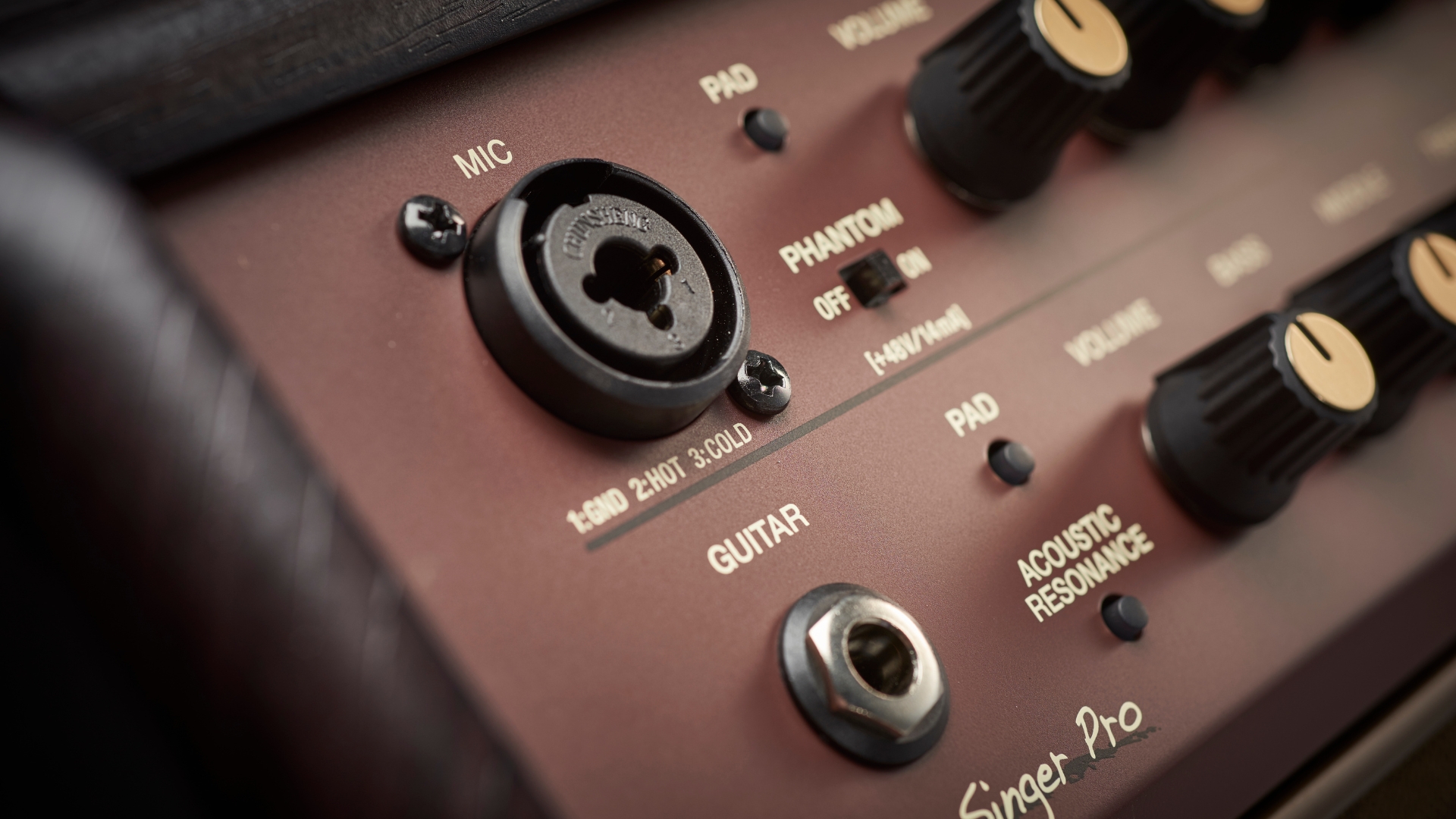
Here at MusicRadar, we are experts in our field, with many years of playing, creating and product testing between us. We live and breathe everything music gear-related, and we draw on this knowledge and experience of using products in live, recording and rehearsal scenarios when selecting the products for our guides.
When choosing what we believe to be the best acoustic guitar amps available right now, we combine our hands-on experience, user reviews and testimonies and engage in lengthy discussions with our editorial colleagues to reach a consensus about the top products in any given category.
First and foremost, we are musicians, and we want other players to find the right product for them. So we take into careful consideration everything from budget to feature set, ease of use and durability to come up with the products we feature in our guides.
Find out more about how we test music gear and services at MusicRadar.
Read more
- Best acoustic electric guitars: budget to high-end
- The best acoustic guitar pickups for every type of player
- Record the perfect take with the best acoustic guitar mics
Want all the hottest music and gear news, reviews, deals, features and more, direct to your inbox? Sign up here.
Jonathan Horsley has been writing about guitars and guitar culture since 2005, playing them since 1990, and regularly contributes to MusicRadar, Total Guitar and Guitar World. He uses Jazz III nylon picks, 10s during the week, 9s at the weekend, and shamefully still struggles with rhythm figure one of Van Halen’s Panama.
- Matt McCrackenJunior Deals Writer
- Ross Holder
